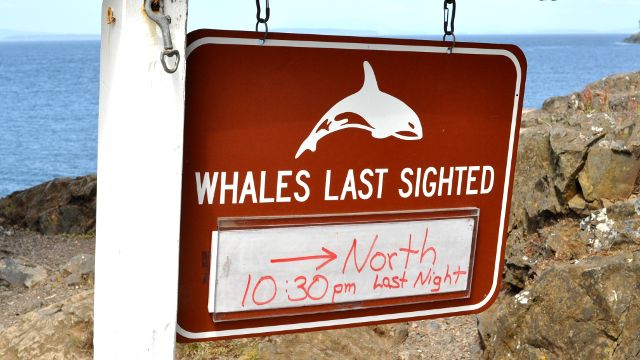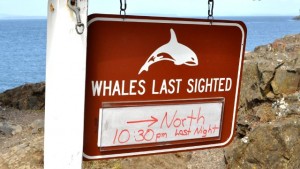They thrive in fish and marine mammals and can reach levels thousands of times higher than the levels of PCBs in the surrounding water, essentially making fish and marine mammals a PCB Petri dish.
Most of the PCB concentration in Puget Sound orcas is the result of PCB build up in their primary food source—Chinook salmon. These tiny toxins lower orcas’ immunity to diseases, decrease sperm count and disrupt many hormonal, developmental and reproductive processes.
Do the PCBs ever leave the orcas?
Unfortunately, once they’re in the orca, the toxins don’t go away. PCBs are considered a Persistent Organic Pollutant (POP) because once ingested, they persistently build up in the fatty blubber of the orcas. As PCB concentration increases, it severely decreases the orca’s lifespan, further threatening the existing members of an already endangered species.
What does that mean for the orcas?
Only sexually mature females have a chance of getting rid of any PCBs. One of the hormonal processes the PCBs disrupt is calf development. The toxin actually imitates the hormone that is the main form of estrogen involved in reproduction.
As a result, a small amount of the PCBs are transferred as the offspring develops. Even more toxins are excreted through the mother’s breast milk which is extremely rich in fat. In fact, studies show female blubber samples have one-third the levels of PCB toxins found in male orcas. Essentially, the offspring increase the mother’s chances of survival by taking some of her PCB concentration.
The trade off is that PCB levels in the developing calf, especially the firstborn, often lead to its premature death. It sometimes takes multiple attempts for female orcas to have a calf with low enough PCB levels to survive. Meanwhile, each time the mother gives birth, she has a better chance of surviving with fewer PCBs in her system.
This tragic cycle, paired with toxic effects of lower sperm counts, higher susceptibility to disease, depletion of the salmon supply and other factors, have resulted in the southern resident orca reproduction rate to drop significantly in recent years.
Orcas do not reproduce in litters or even on a consistent basis. Females begin breeding when they are around 15 years of age and give birth about every three to four years. Around age 40, most females stop breeding and their PCB levels rise at a greater rate.
Without these environmental setbacks, females could produce four-to-six surviving offspring during their reproductive years. Instead, orca survival rates are greatly outnumbered by mortality rates.
What can be done?
Unfortunately, there isn’t a quick fix. Although it’s been more than 40 years since PCBs were banned, their persistent properties cause them to stick around. In fact, researchers predict that PCB concentrations may not decrease to a safer level for at least another 30 years.
The task for humans now is a simple one we’ve all heard before: be kind to the environment. As individuals, dispose of trash properly, purchase environmentally-friendly household supplies and help spread the word about the challenges orcas face and ways to protect them.

